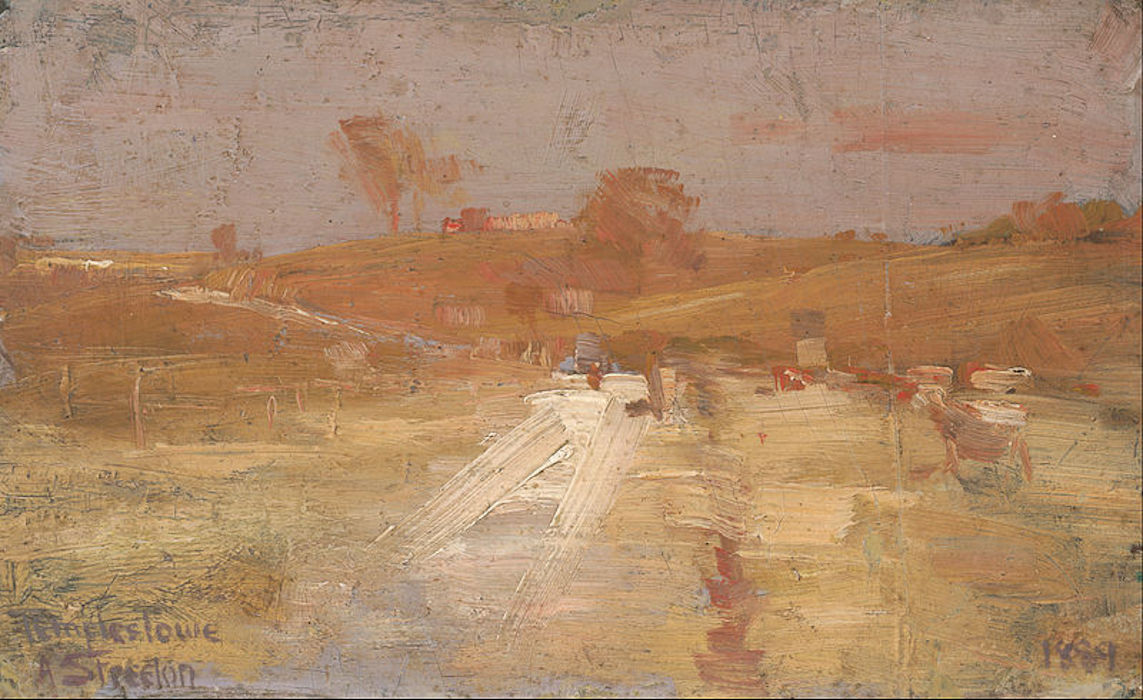“Perhaps, most simply, idleness is reserved contemplation through the tranquilizing of productive and unproductive time.”
I am productive. I like to think so. I must be working toward something, or I will feel defective. Rather, I must be validated by a finished-product, the thought of incompletion knots under my skin. I have this recurring dream where I am in a 2001 Ford Focus (the designated form of transportation in my reality) perch on the angled curve of a 7,000 ft concrete slope. The snout of the car leans forward and descends. I spend the rest of the dream stepping on the brakes in intervals, so the car doesn’t plummet straight down. The dream begins to deteriorate when I suddenly lose my ability to remember which pedal is the brake. This is how deadlines feel to me, seemingly never-ending, tedious, and detrimental. Yet, I rely on deadlines, or I will plummet into uncertainty.
Despite this conditioned idea of progression, I still fall into spirals of laziness. I scroll through Twitter, my eyes ladling social media soup. Other times, I watch YouTube drama between the Mukbang community despite how exhaustingly numbing it is—or despite my partner’s perpetual protest of the slurpy and gulping discord of ASMR.
Though, if I’m lucky, once I transverse the threshold of laziness, I submerge into the realm of idleness.
Idleness is a state that is unraveled from the pressures of deadlines and commitment. Most of the time, it emerges in the spur of the moment, yet it isn’t overindulgent and unforgiving like laziness. There are no grading criteria, awards to be given, nor can it be listed on a CV. The motivation of idleness is not to achieve societal success; although, it can inspire work that may achieve that type of recognition. In many ways, it resembles the idyllic and the pastoral. It is a state not restricted to stillness but can also appear in the motions of everyday life. Perhaps, most simply, idleness is reserved contemplation through the tranquilizing of productive and unproductive time. To further contextualize this abstract realm of idleness, I will provide with what seems to be instances of works that reinforce this definition of idleness:
Idleness in Poetry: The Boundary by Bei Dao – Translated by Bonnie S. McDougall
As stated above, idleness involves some form of contemplation in a tranquilizing manner. In Bei Dao’s “The Boundary,” contemplation appears in the speaker’s wants: “I want to go to the other bank.” The pastoral elements in this poem are emulated in how static the speaker is despite the motions of the natural world around him.

Idleness in Film: Wong Kar-Wai’s In the Mood For Love (2000)
The film that best encapsulates idleness is In the Mood for Love. The entire film composes of waiting and wanting. The protagonists, Mrs. Chan (Maggie Cheung) and Mr. Chow (Tony Chiu-Wai Leung) are repeatedly contemplating how to execute upon a situation, but they never actually act on their contemplations. The aesthetic of this film depends on the idleness of daily life. As you can see in the following clip, much of the scene involves Mrs. Chan walking and waiting idly for her thermos to be filled with noodles. So little happens in the exchange between Mrs. Chan and Mr. Chow, yet, the tension is built in the aesthetic of idleness.
Idleness in Painting: John Henry Twachtman’s Arques-la-Bataille
In simplest terms, this is a painting of a muted pastoral scene. When I first slumped myself in front of this painting at the MET, I kept thinking that to paint this scenery, the artist must’ve been patient to the point of idleness; he must have relented his time to that of the tide.

Metropolitan Museum of Art
Idleness in Music: Michael Kiwanuka’s “The Final Frame”
I had a difficult time selecting a piece from Michael Kiwanuka’s albums that best reflects idleness, especially because so much of his music transposes me to a state of it. There is a transfixing quality in this piece, particularly, the riff. I find it nearly impossible to study while listening to this piece. Listening to it now, I find it difficult to focus on writing this explanation.
My attempt to define idleness is still developing and is only tangible when tethered to some form of artistry. It is theoretical, so it demands to be applied as a lens to can gain traction as a living thing. All in all, I hope that you can somehow pinpoint idleness in your lives. Perhaps, you already have and identified it as a spark, a muse, or an epiphany of some sort.



Amanda, this was such a delightful read. Your lyric redefinitions of what it means to idle feel all too important to think about (especially now). More lyric theorizing! <3
Much appreciated, Nadia! Thank you for taking the time to read! & Love your current piece!